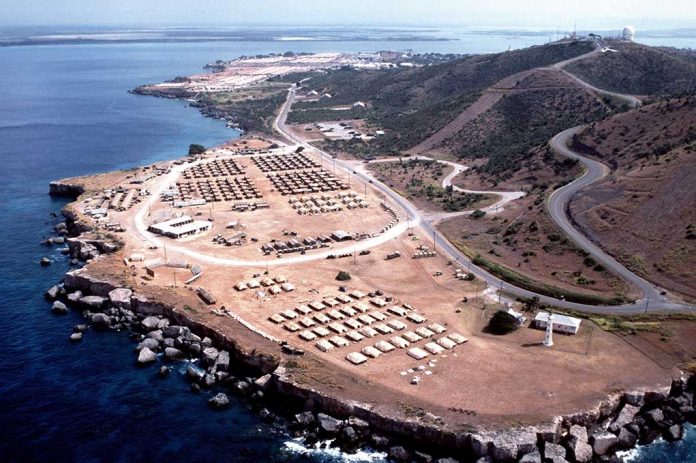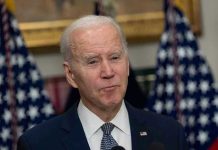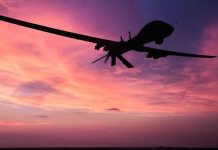
The Trump administration has initiated flights to Guantanamo Bay, transporting illegal immigrants deemed high-security risks to the Cuban detention facility.
Key Takeaways
- The U.S. has begun flying illegal aliens to Guantanamo Bay in Cuba.
- The facility, historically used for terror suspects, will now detain “the worst criminal illegal aliens.”
- Plans are underway to expand the detention capacity to potentially 30,000 detainees.
- Additional U.S. Marines are being deployed to bolster security and build new infrastructure.
- The move is part of a broader strategy to manage illegal immigration more aggressively.
Guantanamo Bay: From Terror Suspects to Illegal Immigrants
In a significant shift in immigration policy, the Trump administration has begun transporting illegal aliens to the Guantanamo Bay naval base in Cuba. This facility, once reserved for terror suspects, is now being repurposed to house what officials describe as “the worst criminal illegal aliens.” The move marks a new chapter in the administration’s efforts to combat illegal immigration and address national security concerns.
#Cuba #BreakingNews Photos of illegal migrant criminals boarding planes to Guantanamo Bay have been released.
These are some of the most dangerous criminals in the world
President Donald Trump has been firm on his stance saying Guantanamo Bay will hold the 'worst of the worst'… pic.twitter.com/MmnpRdy9tF
— 👑💥 Serenity 💥👑 (@polishprincessh) February 4, 2025
Department of Homeland Security Secretary Kristi Noem has been at the forefront of this initiative, emphasizing the facility’s new role in detaining high-risk individuals and stating “Guantanamo Bay will hold the worst of the worst. That starts today.” White House Press Secretary Karoline Leavitt confirmed the commencement of these flights, signaling the administration’s commitment to this controversial approach.
Expanding Capacity and Strengthening Security
The Trump administration is not merely repurposing the existing facility; it’s embarking on an ambitious expansion plan. The goal is to increase Guantanamo Bay’s detention capacity to a staggering 30,000 detainees. This expansion would nearly double the current ICE-funded bed space of approximately 41,500, representing a massive shift in the scale of immigrant detention.
To support this expansion, approximately 200 U.S. Marines have already been dispatched to Guantanamo Bay, with up to 500 expected to arrive soon. These Marines will be tasked with building new infrastructure, including tents, to accommodate the anticipated influx of detainees. This military presence underscores the administration’s commitment to securing the facility and managing what it perceives as a significant threat to national security.
Targeting “High-Priority Criminal Aliens”
President Trump has been explicit about the types of individuals targeted for detention at Guantanamo Bay. An executive order specifies that the facility will hold “high-priority criminal aliens unlawfully present in the United States.” The President has stated that some of these individuals are considered too dangerous even for their home countries to handle, necessitating their detention at this high-security facility.
The administration’s stance has been reinforced by images shared by DHS Secretary Noem, showing migrants in handcuffs and chains being escorted by officials in tactical gear. These visuals have sparked intense debate about the treatment of detainees and the broader implications of this policy shift.
Controversy and Criticism
While the administration touts this move as a necessary step to protect national security, it has not been without its critics. Legal advocacy groups and some government officials have voiced concerns, arguing that this approach treats migrants as a new terrorist threat. The decision to use a facility historically associated with the detention of terror suspects for immigration purposes has raised questions about human rights and the legal status of these detainees.
Cuban officials have also condemned the decision, calling it an act of brutality and a violation of international law. The use of Guantanamo Bay, which the U.S. has leased from Cuba for over a century despite Cuban opposition, adds another layer of complexity to this already contentious issue.
As the Trump administration moves forward with this plan, the eyes of the nation and the world will be watching closely. The expansion of Guantanamo Bay for immigrant detention represents a significant shift in U.S. immigration policy, one that is likely to have far-reaching implications for years to come.
Sources:
United States Begins Flying Illegal Aliens To Guantanamo Bay
Trump administration begins first detention flights to Guantanamo Bay
What to know about Guantánamo Bay, the base where Trump will send ‘criminal aliens’







